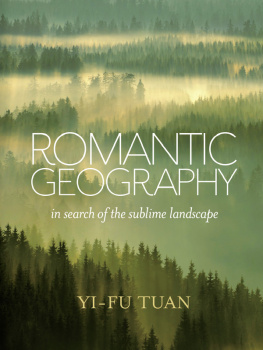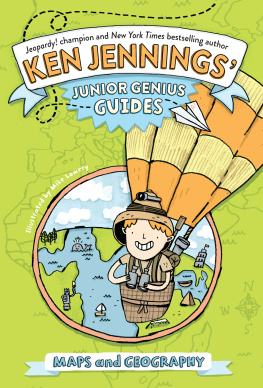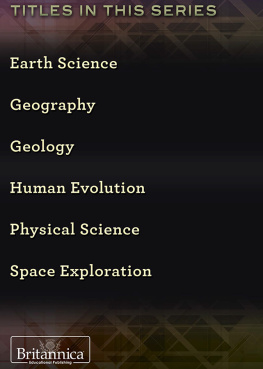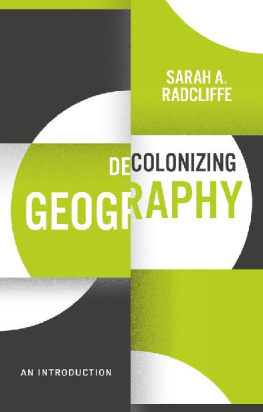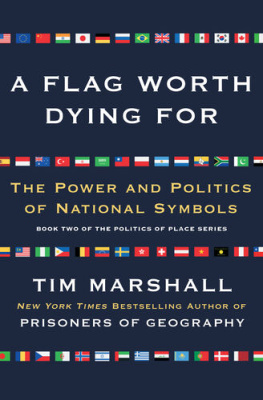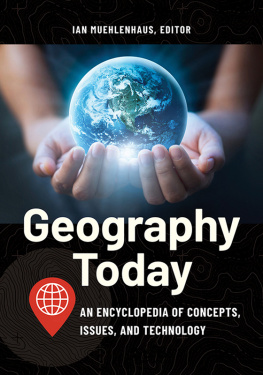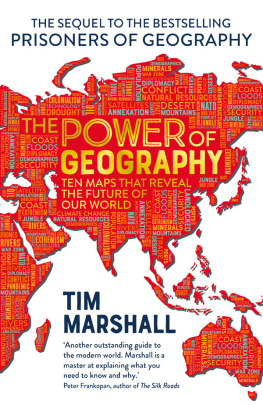ROMANTIC GEOGRAPHY
In Search of
the Sublime Landscape
YI-FU TUAN
THE UNIVERSITY OF WISCONSIN PRESS
The University of Wisconsin Press
1930 Monroe Street, 3rd Floor
Madison, Wisconsin 537112059
uwpress.wisc.edu
3 Henrietta Street
London WC2E 8LU, England
eurospanbookstore.com
Copyright 2013
The Board of Regents of the University of Wisconsin System
All rights reserved. No part of this publication may be reproduced, stored in a retrieval system, or transmitted, in any format or by any means, digital, electronic, mechanical, photocopying, recording, or otherwise, or conveyed via the Internet or a website without written permission of the University of Wisconsin Press, except in the case of brief quotations embedded in critical articles and reviews.
Printed in the United States of America
Library of Congress Cataloging-in-Publication Data
Tuan, Yi-fu, 1930
Romantic geography: in search of the sublime landscape /
Yi-Fu Tuan.
p. cm.
Includes bibliographical references and index.
ISBN 978-0-299-29680-3 (cloth: alk. paper)
ISBN 978-0-299-29683-4 (e-book)
1. GeographyPhilosophy. 2. Discoveries in geography.
3. Romanticism. I. Title.
G70.T83 2013
910.01dc23
2013010425
Contents
Acknowledgments
Eight of my books were written and published since my retirement in 1998. I couldnt possibly have done as much without the support of my departmental colleagues, who gave me a sunny office in which to workor should I say play?for it was so much fun! I want to thank my recent publishers: the University of Minnesota Press, the University of Wisconsin Press, and the newly established George F. Thompson Press. They have been consistently sympathetic. Among the editors of the present book, I am indebted to Raphael Kadushin, Adam Mehring, Barbara Lund, and Matthew Cosby. I am especially indebted to Raphael Kadushin, who welcomed Romantic Geography as a possible publication in less than a week after my submission. Now, thats a real boost to an authors morale!
Retirement suggests a lowering of vitalitya withdrawal from life. This hasnt been quite my fate in the last fourteen years, thanks to the friendship of the effervescent young, of whom there are many, including: Nick Bauch, Chu Hao Chan, Chaoyi Chang, Zhi Cheng, Richard Donohue, Andrew Grant, Daniel Gresch, Hongnian Huang, Andrew Kern, Benjamin Kern, Nathan Larson, Mathias LeBoss, Dustin Lenz, Matt Liesch, Chris Limburg, Melanie McCalmont, Kevin McDonald, Andrew Miller, Kyle Mills, Nick Murphy, Garrett Nelson, Lindy Nelson, Matt OBrien, Kyle Preston, Peter Prohaska, Jemuel Ripley, Jessica Sack, Greg Schwartz, Ben Spaier, Justin Stock, Sean Thompson, Jamon van den Hoek, Xuzheng Wang, Kevin Warnke, David Waskowski, Peter Weissels, Conrad Wiles, Samuel Zhu, and I-Ou Zuo.
The young inspire me if only by showing interest, making me feel that I can reach across the chasm of time, but I should mention one graduate studentGarrett Nelsonwho has also given me specific assistance by finding illustrations (iconic announcements) for the sections on natural environments and seeking permission from copyright holders to use them in my book.
As to intellectual debt, I owe much to Umberto Eco, editor of On Ugliness (Rizzoli, 2007). Reading the text and looking at the striking illustrations made me think that I would like to write a book on ugliness and disgust. But I couldnt make any headway. I was fighting against my nature, which resists dwelling on the dark side of life. So why not make my next book be one on romantic geography that, for all its bright lan, does also have its murky depths?
Romantic Geography
OVERTURE
Coupling romantic with geography could seem a contradiction of terms, for few people nowadays see geography as romantic. Down-to-earth, full of common sense, necessary to survival, yesbut romantic? Yet there was a time, not so long ago, when geography did have glamor, was considered romantic. It was the time of heroic explorations. Explorers were known as geographers, people skilled in surveying and mapping. Their adventures, when reported, were widely followed and much admired. One could make blockbuster movies of David Livingstone and Ernest Shackleton as one could of Elizabeth I and Gandhi. What they had in common was that they initiated and participated in major events.
However, were these events really geographical events? Wouldnt an account of the adventures of David Livingstone in Africa be history rather than geography? The two fields are very different and yet they are often taught as a package in schools and colleges. How do they differ? The one tells a good story, the other does not. A history of the American Civil War is rich in personalities and drama, with instances of chivalry that are at the heart of romance. A geography of the American Civil War, by contrast, is likely to be informative and useful but not exciting. Histories can be dry too, of course, but they can at least be deemed romantic in the sense that they are an extra or a luxury that is unnecessary to civilization and its survival. India, for example, is a great civilization, one backed by fantastic myths and legends rather than history of the sort known to Europe and China. On the other hand, to survive, all societiesprimitive and sophisticatedmust have a more or less systematic knowledge of the lay of the land. History also has historical romances, a genre pioneered by Sir Walter Scott. But to the question, are there geographical romances? Most people would draw a blank unless they thought of tales of exploration. So, again, the idea of a romantic geographyone that is imaginative and daring yet anchored in realityseems contradictory. Can there, nevertheless, be a romantic geography? Can it be argued that there is need for one since much of human life is in fact driven by passionby the desire to reach what is out of reach or even beyond reach?
My answer to both questions is yes, and I will give reasons for my opinion in this book. But before I do, I need to take care of a few preliminaries, the first of which is defining the words romantic or romanticism, a loose set of ideas and values that emerged in Europe between 1780 and 1848. The precision of the dates is misleading for the ideas and values themselves are vague and often contradictory. T. E. Hulme opines that romanticism is essentially a transcendence of the everyday and a faith in human perfectibility. Jacques Barzun speaks of a romanticist temperament, which he characterizes as admiration for energy, moral enthusiasm, original genius, recognition of contrast between mans greatness-wretchedness, power-misery. Romanticism overlapped with the idea of the sublime and of the gothic. Both then dovetailed into a phase of Western imagination called the decadent (1880-1900). All four characteristicsromanticism, the sublime, the gothic, and the decadentwere rebellions against the norms of life, with their ideal of stability.
Geography, however, is mostly about the norms of life. When geographers note change, the change is usually ascribed to impersonal forces. To even hint that a yearning to transcend the everyday or that the lure of human perfectibility plays a role would put the work out of the category of serious scholarship and into the category of romance. Geographical writing can, of course, show moral enthusiasm, one of the romantic traits mentioned by Barzun, but the enthusiasmthe fervoris far more likely to be denunciatory than admiring, more a cutting critique of capitalism than a glowing praise of socialism. Lastly, the romantic temperament, says Barzun, is torn between greatness and wretchedness, power and misery. The works of contemporary geographers show little trace of such romantic agony.

